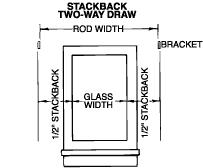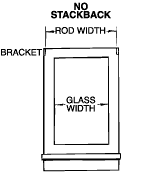Fabric Blinds Curtain Rods Window Treatments Trims & Tassels Wallpaper
Illustrated Guide to Ordering Curtain Rods For Curtains and Draperies
Rod Measuring Starting Point |
|
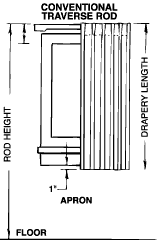 |
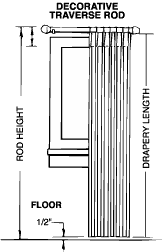 |
Conventional traverse rod - top of rod |
Decorative traverse rod - bottom of rings |
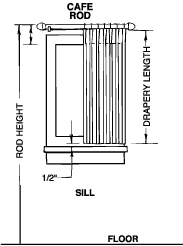 |
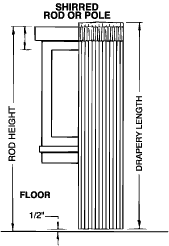 |
Café rod - bottom of rings |
Shirred rod or pole - top of header or top of rod if no header |
|
|
Drapery Height - The distance from the finished installed edge to the finished installed bottom edge of the drapery panel. |
|
Finished Height - Final top to bottom length of treatment including allowances for rod take-up, poufs, etc. Allowances are added to drapery height to determine finished height |
|
Take-up - Distance the drapery is shortened when shirred through a rod pocket. |
|
|
|
Stackback - The amount of space required to completely draw open the drapery to clear the glass without obstructing the view. A general rule is to add one-third of window width to allow for stackback.
|
|
Drapery Finished Width - |
|
Overlap - The part of a pair of draperies which hides the master carrier and overlaps in the center when draperies are drawn. A general rule is to allow 2-1/2" - 3-1/2" per drapery panel on a two-way draw traverse rod. Overlap allowance not needed for one-way draw or shirred pocket installation. |
|
Returns - The amount of drapery that covers the distance from the face of the rod to the wall. A general rule is to add 1/2" to projection to avoid fabric binding. Exact return distances are given for each traverse rod. |
|
| Fullness - Fullness defines the amount of fabric that is pleated or shirred for a given drapery finish width. Treatment fullness can be expressed as a percentage (e.g. 100%) or a ratio (e.g. 2 to 1). Fabric weight and personal preference determine fullness. Consult workroom for specific guidelines. | |

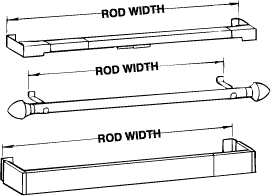 No Stackback - equals window width
No Stackback - equals window width
